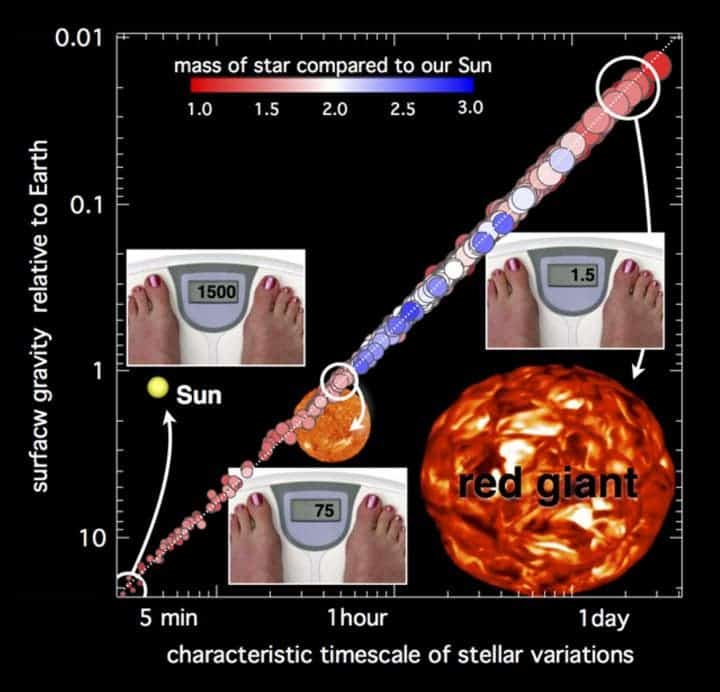Researchers have developed a novel way of calculating the gravity of distant stars, a key information in determining whether a planet is capable of supporting life or not.
“The method applies a self-adapting filter to time-series data to isolate the gravity-dependent signal (that is, granulation and oscillations) from slower gravity-independent stellar (that is, activity and rotation) and instrumental effects. The typical time scale of the residual signal can be determined directly from the autocorrelation function (ACF) of the filtered time-series data,” the study writes.
The surface gravity (g) of an astronomical object (say a star) is the gravitational acceleration experienced at its surface. To put it more simply and just a wee bit misleading, it’s how much you would weigh on that star – if a star had a solid surface to stand on that is.

Stars are big, and as you’d expect, their gravitational pull is also very big. For example, neutron stars are so compact that they have an typical surface values of a few ×1012 m/s2 (that is more than 100.000.000.000 times that of Earth). But researchers are more interested in stars comparable to our Sun which could host life.
“If you don’t know the star, you don’t know the planet,” said study co-author, UBC Professor Jaymie Matthews. “The size of an exoplanet is measured relative to the size of its parent star. If you find a planet around a star that you think is Sun-like but is actually a giant, you may have fooled yourself into thinking you’ve found a habitable Earth-sized world. Our technique can tell you how big and bright is the star, and if a planet around it is the right size and temperature to have water oceans, and maybe life.”
The new technique, called autocorrelation function timescale allows scientists to calculate surface gravity with an accuracy of about four per cent, for stars too distant and too faint to apply current techniques. It works by studying subtle variations in the brightness of distant stars recorded by satellites like Canada’s MOST and NASA’s Kepler missions. It’s not overly complicated and seems to be very effective.
“The timescale technique is a simple but powerful tool that can be applied to the data from these searches to help understand the nature of stars like our Sun and to help find other planets like our Earth,” said Kallinger, the study’s lead author.
There is a growing interest in studying planets in the so-called ‘Goldilocks area‘, not too hot and not too cold, just right enough to support life. In the near future, satellites will be launched with the sole purpose of investigating these stars.






